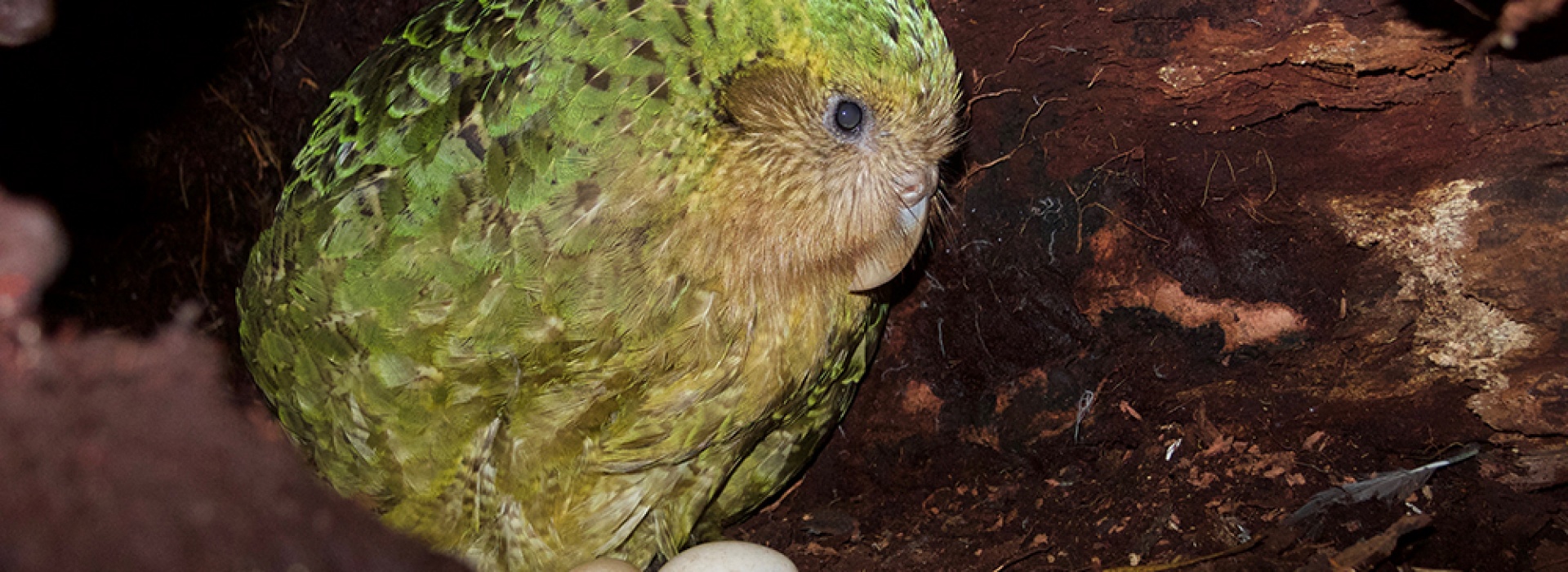
Smart ideas. That are saving a species.
New Zealand is a world leader in coming up with creative ways to save an entire species. Here’s how Kiwis are using their smarts to bring the kākāpō back from the brink of extinction.

New Zealand is a world leader in coming up with creative ways to save an entire species. Here’s how Kiwis are using their smarts to bring the kākāpō back from the brink of extinction.
Using Smarts to Save the Kākāpō
Kiwi creativity has had to take flight to look after our endangered birds. Here’s how New Zealand’s Kākāpō Recovery Programme at the Department of Conservation, in partnership with Ngāi Tahu and Meridian are using their smarts to save the kākāpō, our endemic, charismatic, and nocturnal flightless parrot.
Smart Eggs
To protect kākāpō eggs from predators, it’s safer if they are incubated and hatched away from the nest. The real egg is switched with a 3D-printed smart egg, which mimics the sounds that would come from a real egg as it nears hatching. This triggers the kākāpō mums to get ready for their new arrival, which gives the chicks a better chance of survival when they’re safely hatched and brought back to the nest.
Smart Transmitters
Keeping an eye on a shy nocturnal bird was proving tricky, so the Kākāpō Recovery Programme solved the problem with experimental activity-tracking smart transmitters. They’re worn by every bird and plots their position, telling us where they’ve been, how long for, and who with. The system can even report which kākāpō have mated – there’s no such thing as privacy if you’re endangered!
Smarty-Pants Spokes-Bird
Skraaaark! Forget TikTok stars, New Zealand kākāpō are represented by their very own spokes-bird Sirocco. The Department of Conservation cleverly use social media as a tool to raise awareness of kākāpō. Sirocco @Spokesbird has become one of bird-kind’s biggest influencers, with thousands of followers around the world. This exposure drives online adoption programmes, which raise money to help save the kākāpō.
Smart Feeders
Each kākāpō has its own special feeder, which is programmed to open only for that bird. Making sure that each kākāpō gets its own rations. This allows the Department of Conservation to manage the bird’s weight, so that they are in peak physical condition for breeding. Did you know that if females are too light, they do not produce any chicks and if they are too heavy, they produce too many males! A weighty responsibility to get right when the kākāpō’s total population count is 201.
Looking for somewhere that uses smarts to help save their world? We know a place.
Image Source: Dr Andrew Digby, Science Advisor, Department of Conservation.
Find out more about the Kākāpō Recovery Programme.